
eBook - ePub
In Business with Bees
How to Expand, Sell, and Market Honeybee Products and Services Including Pollination, Bees and Queens, Beeswax, Honey, and More
- 192 pages
- English
- ePUB (mobile friendly)
- Available on iOS & Android
eBook - ePub
In Business with Bees
How to Expand, Sell, and Market Honeybee Products and Services Including Pollination, Bees and Queens, Beeswax, Honey, and More
About this book
Ready to take your beekeeping skills to the next level? In Business with Bees provides the answers you need.
This book takes serious beekeepers past the beginning stages and learning curves and offers practical, useful advice to move your passion into a part-time or full-time career with measurable results. This beekeeping business how-to guide offers all of the in-depth advice you need, in one place.
This book takes serious beekeepers past the beginning stages and learning curves and offers practical, useful advice to move your passion into a part-time or full-time career with measurable results. This beekeeping business how-to guide offers all of the in-depth advice you need, in one place.
- Writing a business plan
- Finding the best sources for funding
- Determining what your facilities will be and how to acquire them
- Getting and installing the right equipment
- Cooperating with other local businesses
- Stocking inventory and managing warehouse space
- Finding customers
- Raising and selling queens, packages, and nucs
- Expanding pollination, including contracts to protect you
- Making and selling peripheral products from wax, propolis, and honey
- Organizing teaching, speaking, and planning events
- Hiring and managing your growing team
- Promoting your business
- Measuring your success
This book provides solutions for all your beekeeping business questions, from start to finish. With this knowledge, you can become as knowledgeable, confident, and successful in running a business as you are in beekeeping.
Frequently asked questions
Yes, you can cancel anytime from the Subscription tab in your account settings on the Perlego website. Your subscription will stay active until the end of your current billing period. Learn how to cancel your subscription.
At the moment all of our mobile-responsive ePub books are available to download via the app. Most of our PDFs are also available to download and we're working on making the final remaining ones downloadable now. Learn more here.
Perlego offers two plans: Essential and Complete
- Essential is ideal for learners and professionals who enjoy exploring a wide range of subjects. Access the Essential Library with 800,000+ trusted titles and best-sellers across business, personal growth, and the humanities. Includes unlimited reading time and Standard Read Aloud voice.
- Complete: Perfect for advanced learners and researchers needing full, unrestricted access. Unlock 1.4M+ books across hundreds of subjects, including academic and specialized titles. The Complete Plan also includes advanced features like Premium Read Aloud and Research Assistant.
We are an online textbook subscription service, where you can get access to an entire online library for less than the price of a single book per month. With over 1 million books across 1000+ topics, we’ve got you covered! Learn more here.
Look out for the read-aloud symbol on your next book to see if you can listen to it. The read-aloud tool reads text aloud for you, highlighting the text as it is being read. You can pause it, speed it up and slow it down. Learn more here.
Yes! You can use the Perlego app on both iOS or Android devices to read anytime, anywhere — even offline. Perfect for commutes or when you’re on the go.
Please note we cannot support devices running on iOS 13 and Android 7 or earlier. Learn more about using the app.
Please note we cannot support devices running on iOS 13 and Android 7 or earlier. Learn more about using the app.
Yes, you can access In Business with Bees by Kim Flottum in PDF and/or ePUB format, as well as other popular books in Technik & Maschinenbau & Agribusiness. We have over one million books available in our catalogue for you to explore.
Information
1 Growing Your Operation

Package day is in and out, without a lot of support.
The first thing you’ll need as you get started with the beekeeping business of your dreams is a solid plan. Start putting together a basic business plan, and take the time to be thorough about each section. It should include
▪ Your business name;
▪ A description of your operation in 250 words or less;
▪ A dozen or so photos, even if they are of empty fields or to-be-repurposed buildings;
▪ A description of your inventory over the seasons;
▪ Who your competition is;
▪ Who your customers are;
▪ What your labor will be, including how many people will be working and, if they are seasonal, their schedules;
▪ Who will be running the place when you are there and when you are not;
▪ Your business structure;
▪ Your attorney and your accountant (who must have agriculture, farm, and government experience);
▪ Profit and loss (P&L) statements based on projections for the first three—ideally, five—years (see the samples below);
▪ When and at what income you will break even and how much you will need to get started; and
▪ The worst things that could happen to your business—and be honest!—and what you would do if they happened.
When you have a solid plan, find somebody who works with business start-ups, but who has no clue about bees, agriculture, growing things, or beekeeping, and convince them that this is a good idea. They know what to do, and when you’ve convinced them you are on the right track, you’re almost home.
Your Competition: What Else Is Out There?
You probably already know all the bee-related businesses within a day’s drive of where you want to start your operation. I use three levels of involvement to categorize these businesses; all of them can, and will be, competition at some level.
The lowest level of supply businesses are the farm stores and co-ops that just sell preboxed kits and individual pieces. They’ll have the basic equipment beekeepers need to get started. They may even arrange to have a truck with packages arrive once in the spring. Because they deal with farmers, their store hours are usually good for beekeepers. What they don’t have is anybody on staff who can answer questions about bees. They may have a place to call—usually the company that produces the supplies they sell—but nobody local. There’s probably one of these almost in your backyard. My experience has been that they don’t do much or last long in the beekeeping business, but be aware of them.

Boxed and ready to go. Who do you ask for help?

Most of the basics, but not a large selection.
Next are those beekeepers who are, essentially, very large sideliners or even small commercial outfits, kind of like you. Their first obligation is their business. They make honey, raise queens, make nucs, pollinate, and have part of a building set up with some equipment for sale. Lots of it is what they can buy in bulk and either use themselves or resell. They don’t like to tie up a lot of money in inventory, but they can order almost anything if a customer asks. Their store hours are erratic, if mostly predictable, but seasonal responsibilities can—and usually do—get in the way of helping customers. There will be nucs, packages, and queens for sale seasonally, and they will generally have someone who can answer questions. Depending on where you are, there may be one small or medium commercial outfit like this close by, or even three or four if you happen to live in beekeeping country.
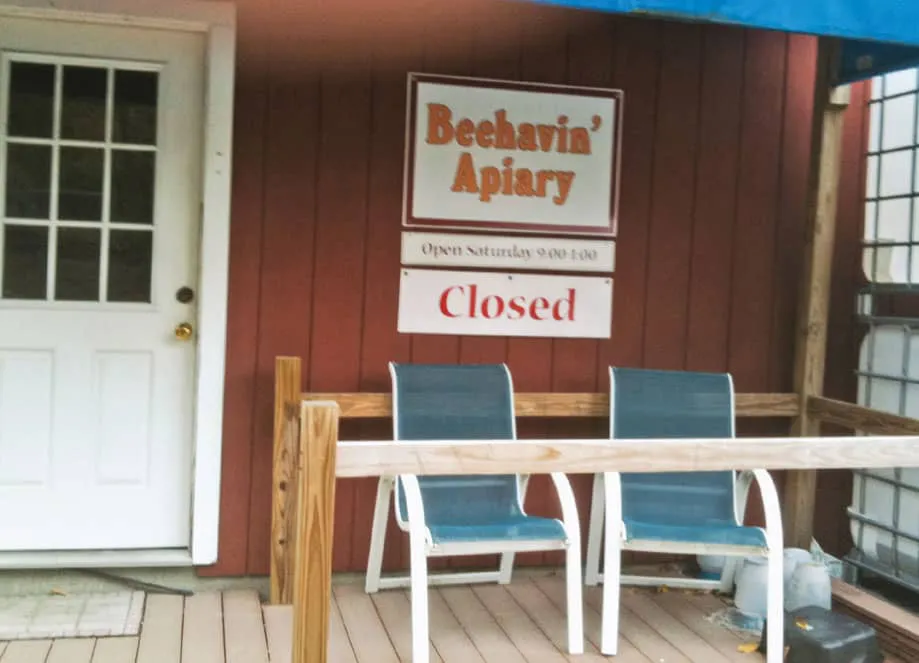
Store hours are short.

Buying some items in bulk means there’s extra to sell.
The third level of supply business includes the actual beekeeping supply stores. They sell anything and everything for the beekeeper. Open year round, they have lots of inventory. They’re probably a dealer for two or more manufacturers (or they might even be a branch of one). Some of their equipment might be made locally. They might have a commercial beekeeper onsite, though probably not, but they’ll definitely have some bees and provide programs for clubs. Packages and nucs are available seasonally, and are usually a bit less expensive than the one-load package suppliers. Queens are available almost all year. Hours are beekeeper friendly. Prices are often more than catalogue prices, but you don’t have to pay shipping, so it works out.
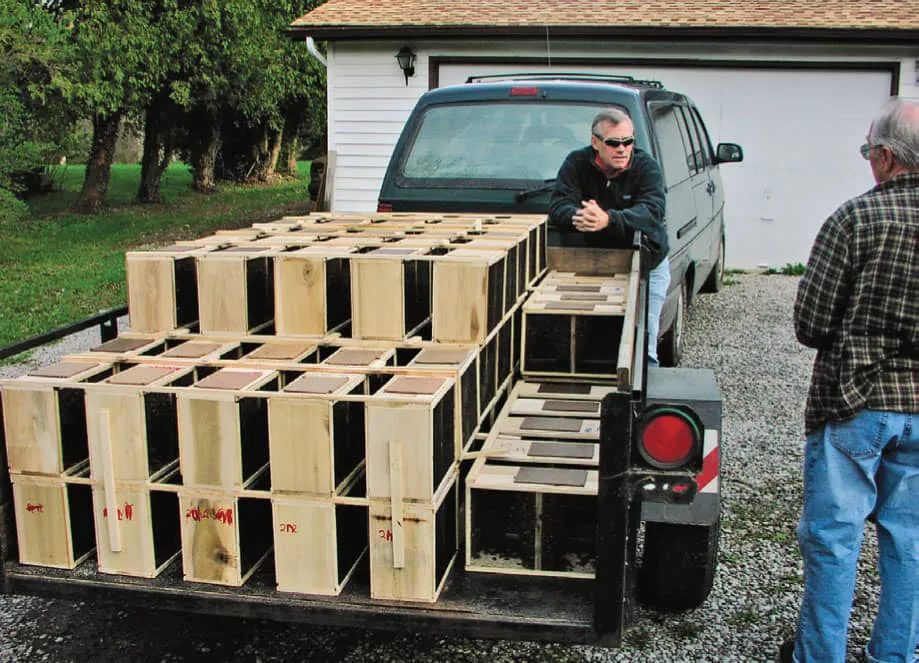
Not big enough for pallets, they still haul extra packages.

Hive covers.
Spend a little time finding all of these outlets in your area. If you haven’t already, visit them all and find out what they do and don’t do. Ask every beekeeper you know about every business you can find. What’s good, what’s not, and what’s just average? Be sure to ask about convenience, in terms of both hours and access. Could you do it better, faster, cheaper, or easier? What can you do that these businesses can’t or won’t? Better, what do you see coming down the road that the others aren’t seeing or won’t see? What service, action, class, or official position at an association can you offer that they aren’t? Most importantly, how did the beekeepers you talked to find out about the outlets they mentioned? Who are they missing, and how well does each outlet’s promotion work? Know that or go home.
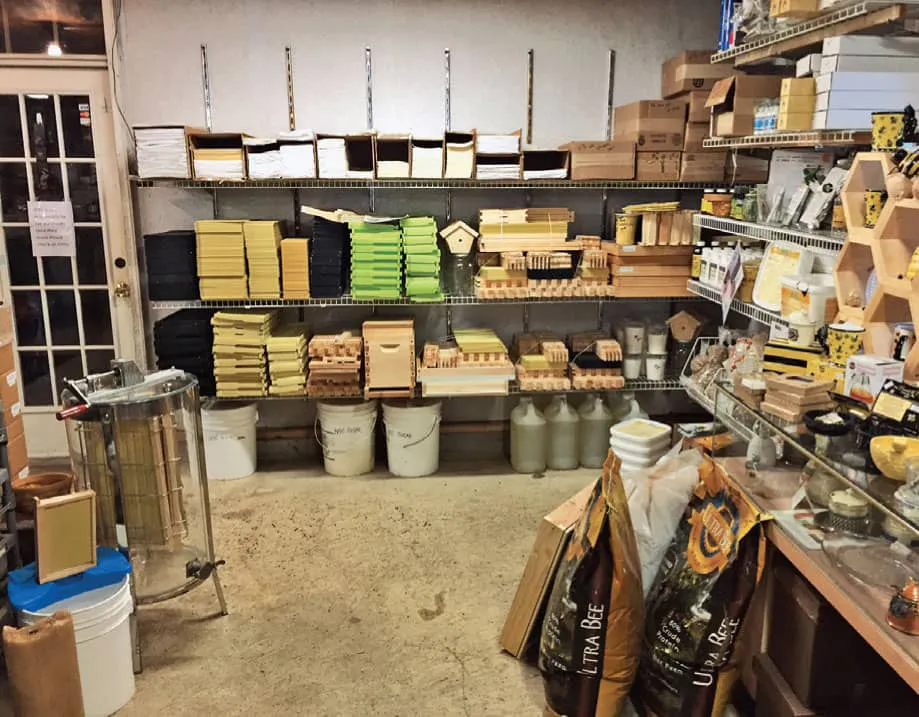
Foundation sheets.
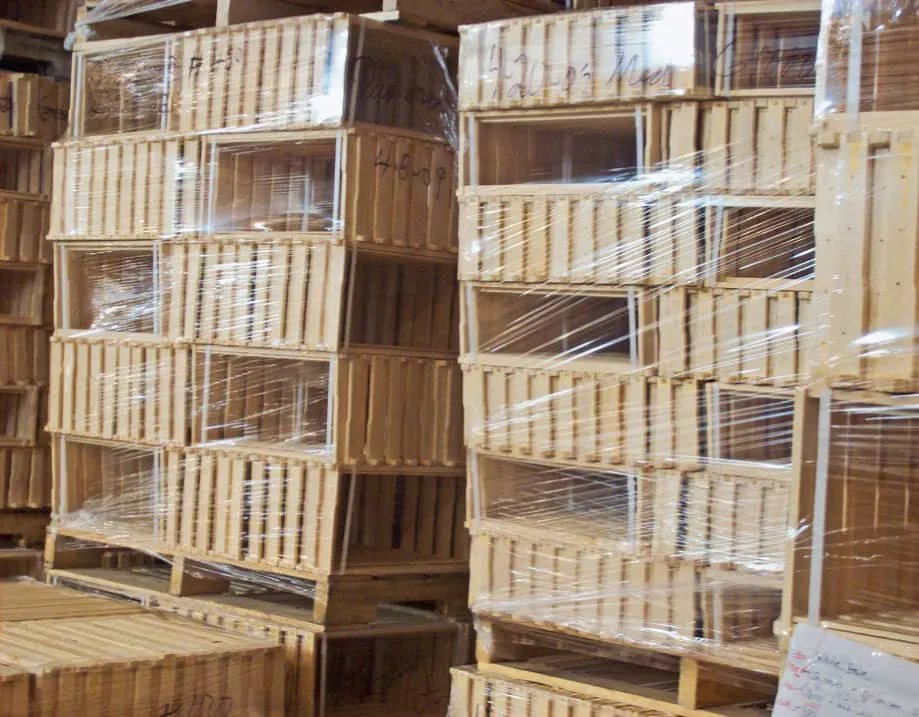
Shrink-wrapped frames.
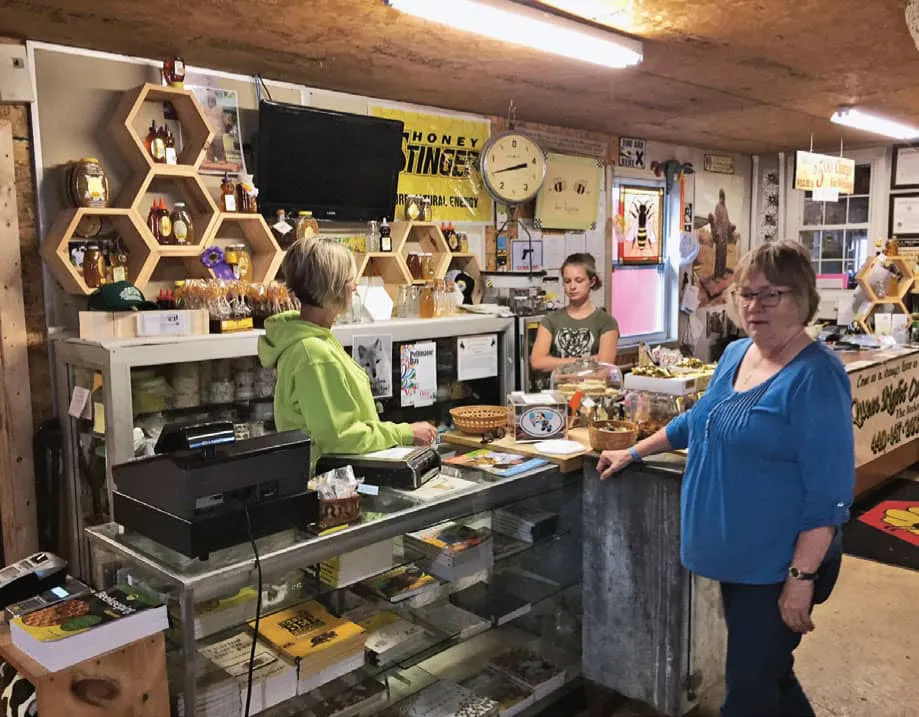
Books: basic and advanced.
Who Is Your Customer?
Once you have evaluated your competition, you have to evaluate yourself and the business you are considering. And it’s your customers who will define much of it for you. Will you serve anybody who even thinks about honeybees, from the occasional consumer of a jar of honey to the smallish queen producer down the road? Will you stick to mostly small-scale beginners and hobbyists? Will you work with larger operations that may actually buy ...
Table of contents
- Cover
- Title Page
- Contents
- Introduction: Transforming Your Sideline Operation into a Real Business
- 1 Growing Your Operation
- 2 What to Sell—Products Made by Bees
- 3 What Else to Sell—Services by Bees and Beekeepers
- 4 Promotion
- 5 Staying in Business— or Not
- Acknowledgments
- About the Author
- Index
- Dedication
- Copyright